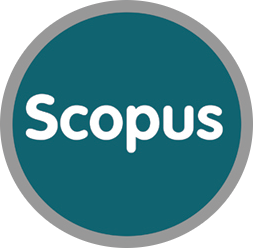Комплексоутворення між двошаровими карбоновими нанотрубкамита металоценами за типом «гість-хазяїн»
DOI: https://doi.org/10.15407/hftp07.04.373
Анотація
Ключові слова
Посилання
1. Novoselov K.S., Jiang D., Schedin F., Booth T.J., Khotkevich V.V., Morozov S.V., Geim A.K. Two-dimensional atomic crystals. Proc. Nat. Acad. Sci. USA. 2005. 102(30): 10451. https://doi.org/10.1073/pnas.0502848102
2. Son Y.-W., Cohen M.L., Louie S.G. Half-metallic graphene nanoribbons. Nature. 2006. 444: 347. https://doi.org/10.1038/nature05180
3. Geim A.K., Novoselov K.S. The structure of suspended graphene sheets. Nature. 2007. 446: 60. https://doi.org/10.1038/nature05545
4. Matsui D.V., Prylutskyy Yu.I., Matzuy L.Yu., Le Normand F., Ritter U., Scharff P. Transverse and longitudinal magnetoresistance in graphite intercalated by Co. Physica E. 2008. 40(7): 2630. https://doi.org/10.1016/j.physe.2007.09.121
5. Matsui D., Ovsiyenko I., Lazarenko O., Prylutskyy Yu., Matsui V. Abnormal electron transport in graphite intercalation compounds with iron. Mol. Cryst. Liq. Cryst. 2011. 535(1): 64. https://doi.org/10.1080/15421406.2011.537941
6. Ritter U., Scharff P., Grechnev G.E., Desnenko V.A., Fedorchenko A.V., Panfilov A.S., Prylutskyy Yu.I., Kolesnichenko Yu.A. Structure and magnetic properties of multi-walled carbon nanotubes modified with cobalt. Carbon. 2011. 49(13): 4443. https://doi.org/10.1016/j.carbon.2011.06.039
7. Ritter U., Tsierkezos N.G., Prylutskyy Yu.I., Matzui L.Yu., Gubanov V.O., Bilyi M.M., Davydenko M.O. Structure-electrical resistivity relationship of N-doped multi-walled carbon nanotubes. J. Mater. Sci. 2012. 47(5): 2390. https://doi.org/10.1007/s10853-011-6059-6
8. Durkop T., Kim B.M., Fuhrer M.S. Properties and applications of high-mobility semiconducting nanotubes. J. Phys.: Condens. Matter. 2004. 16(18): 553. https://doi.org/10.1088/0953-8984/16/18/R01
9. Kane C.L., Mele E.J. Quantum Spin Hall Effect in Graphene. Phys. Rev. Lett. 2005. 95(22): 226801. https://doi.org/10.1103/PhysRevLett.95.226801
10. Mykhailenko O., Matsui D., Prylutskyy Yu., Normand F., Eklund P., Scharff P. Monte Carlo simulation of intercalated carbon nanotubes. J. Mol. Model. 2007. 13(1): 283. https://doi.org/10.1007/s00894-006-0129-8
11. Mykhailenko O.V., Prylutskyy Yu.I., Matsuy D.V., Strzhemechny Y.M., Le Normand F., Ritter U., Scharff P. Structure and thermal stability of Co- and Fe-intercalated double graphene layers. J. Comput. Theor. Nanosci. 2010. 7(6): 996. https://doi.org/10.1166/jctn.2010.1444
12. Grechnev G.E., Lyogenkaya A.A., Kolesnichenko Y.A., Prylutskyy Y.I., Hayn R. Electronic structure and magnetic properties of graphite intercalated with 3d-metals. Low Temp. Phys. 2014. 40(5): 580. https://doi.org/10.1063/1.4876224
13. Mykhailenko O.V., Prylutskyy Yu.I., Komarov I.V., Strungar A.V. Host-Guest Intercalate of Carbon Nanotube with Bis(η5-cyclopentadienyl)cobalt. In: II Ukrainian-Polish scientific conference Membrane and Sorption processes and technologies (December 2–4, 2015, Kyiv, Ukraine). P. 148.
14. Rapaport D.C. The Art of Molecular Dynamics Simulation. (Cambridge, UK: Cambridge University Press, 1995).
15. Tersoff J. Modelling Solid–State Chemistry: Interatomic Potentials for Multicomponent Systems. Phys. Rev. B. 1989. 39: 5566. https://doi.org/10.1103/PhysRevB.39.5566
16. Dorfman S., Mundim K.C., Fuks D., Berner A., Ellis D.E. Snapshot of an Electron orbital. Mat. Sci. and Eng. 2001. 15: 191. https://doi.org/10.1016/S0928-4931(01)00308-3
17. Mykhailenko O.V., Prylutskyy Yu.I., Komarov I.V., Strungar A.V., Ritter U. Guest-Host Intercalate of Carbon Nanotube with Tricarbonyl(cyclopentadienyl)mangan. In: 3rd International research and practice conference NANOTECHNOLOGY and NANOMATERIALS (NANO-2015), (August 26–29, 2015, Lviv, Ukraine). P. 540.
18. Ionescu M.I., Zhang Y., Li R., Sun X., Abou-Rachid H., Lussier L-S. Hydrogen-free spray pyrolysis chemical vapor deposition method for the carbon nanotube growth: Parametric studies. Appl. Surf. Sci. 2011. 257(15): 6843. https://doi.org/10.1016/j.apsusc.2011.03.011
19. Mykhailenko O.V., Prylutskyy Y.I., Komarov I.V., Strungar A.V., Tsierkezos N.G. Guest-host intercalate of double-walled carbon nanotube with tricarbonyl(cyclopentadienyl)manganese. Materialwissenschaft und Werkstofftechnik 2016. 47(2–3): 203. https://doi.org/10.1002/mawe.201600477
20. Mykhailenko O.V., Prylutskyy Y.I., Komarov I.V., Strungar A.V. Thermodynamic Complexing of Monocyclopentadienylferrum(II) Intercalates with Double-Walled Carbon Nanotubes. Nanoscale Res. Lett. 2016. 11(1): 128. https://doi.org/10.1186/s11671-016-1351-7
21. Mykhailenko O.V. Formation of Double-Walled Nanotube-Bis (cyclopentadienyl)nickel Complexes By Host-Guest Type. In: Ukrainian Conference with International Participation Chemistry, Physics and Technology of Surface. (May 17–18, 2016, Kyiv, Ukraine). P. 127.
DOI: https://doi.org/10.15407/hftp07.04.373
Copyright (©) 2016 O. V. Mykhailenko


This work is licensed under a Creative Commons Attribution 4.0 International License.



